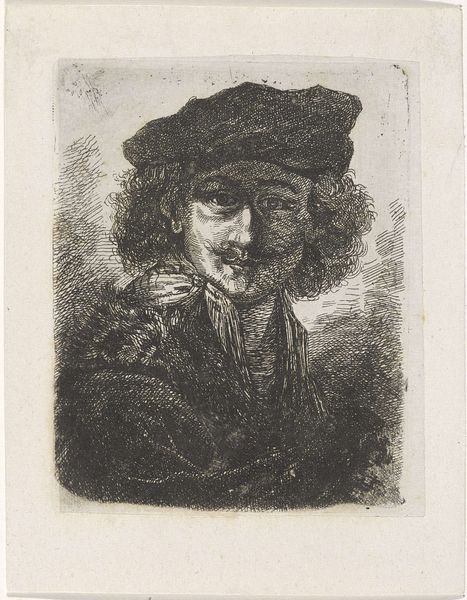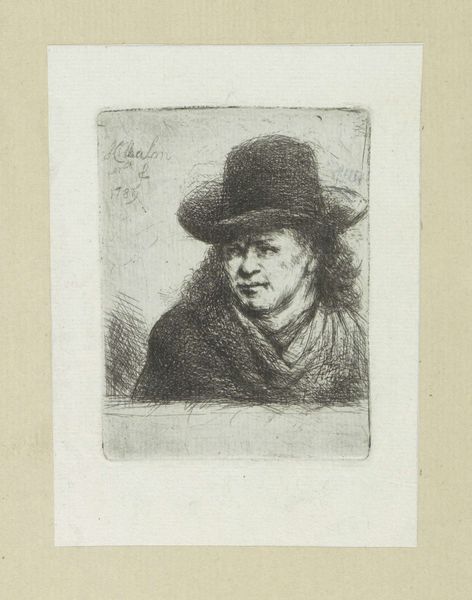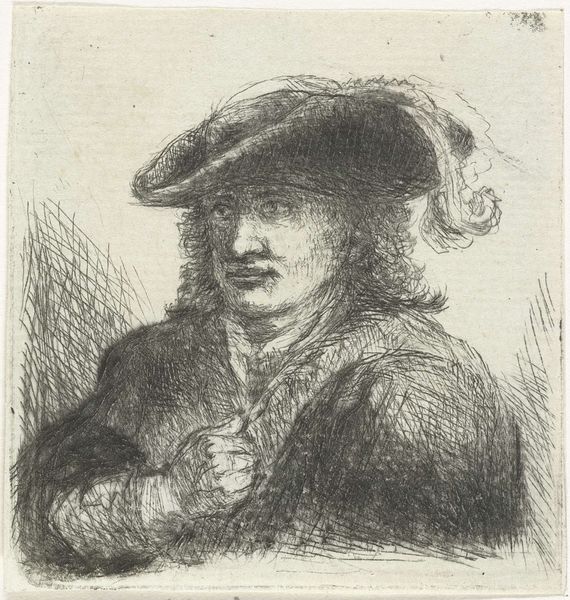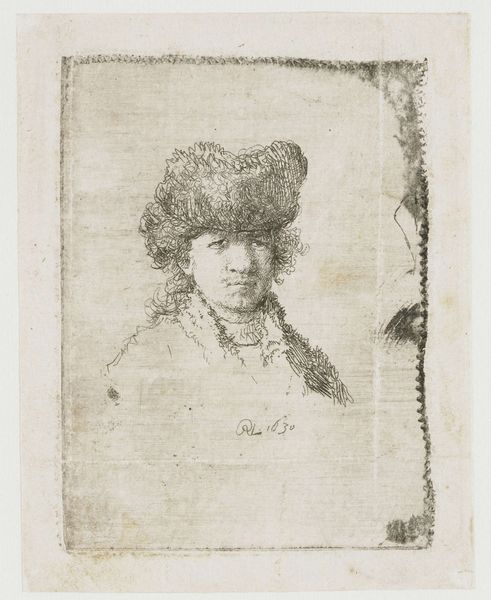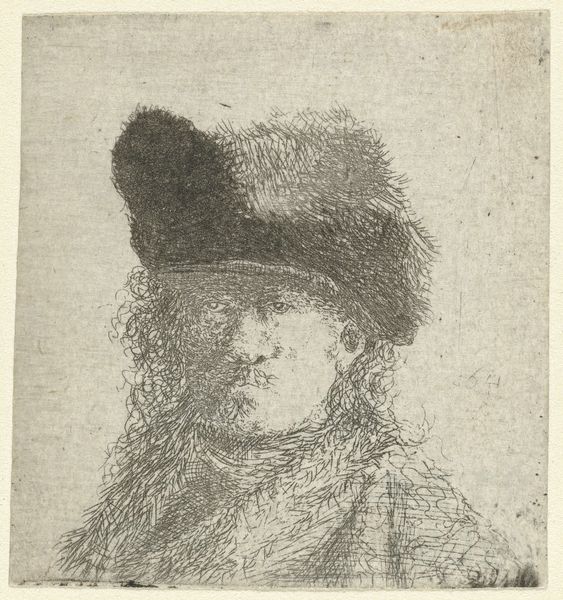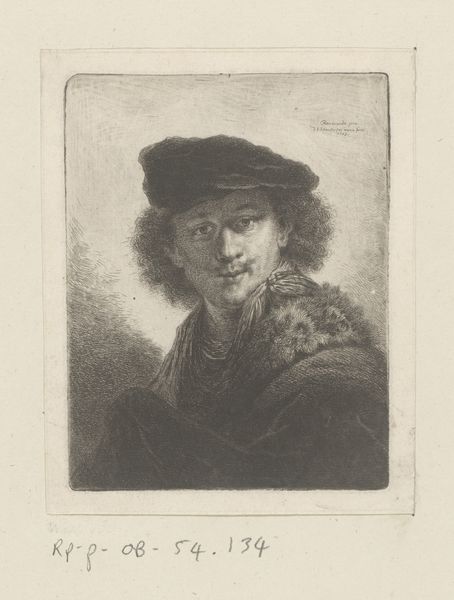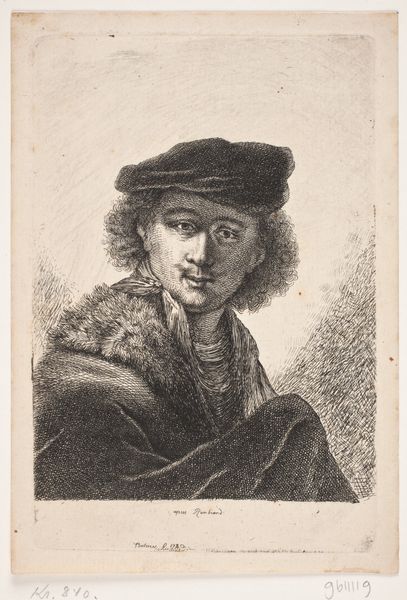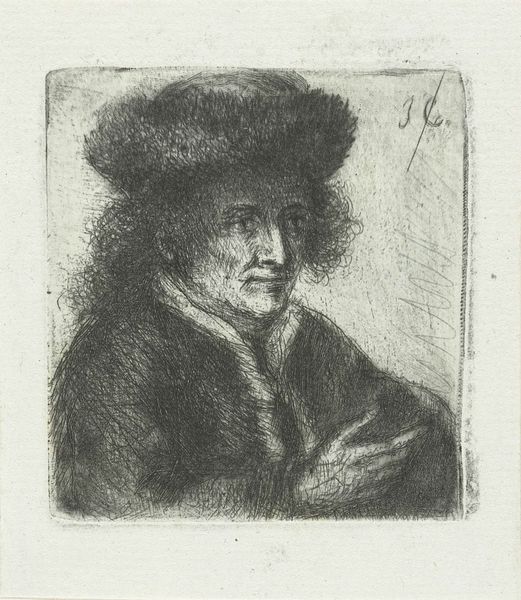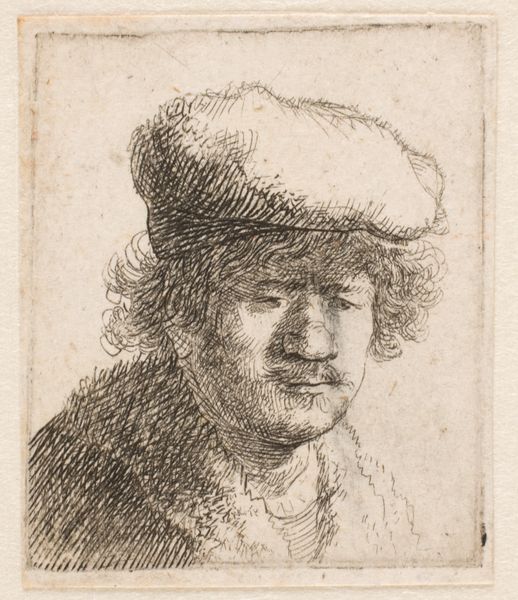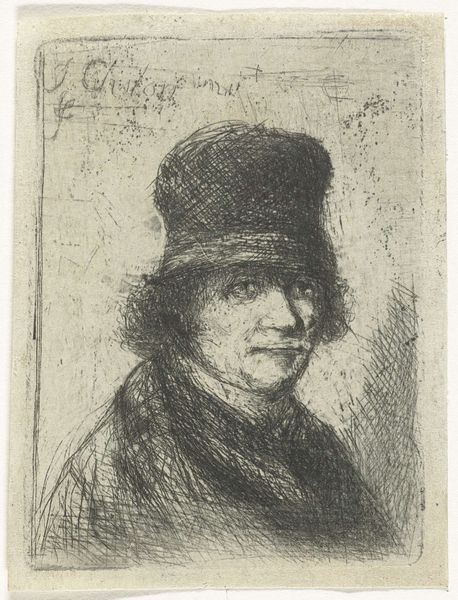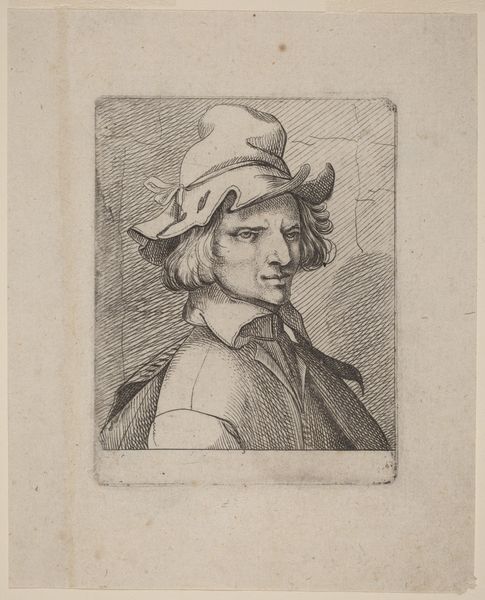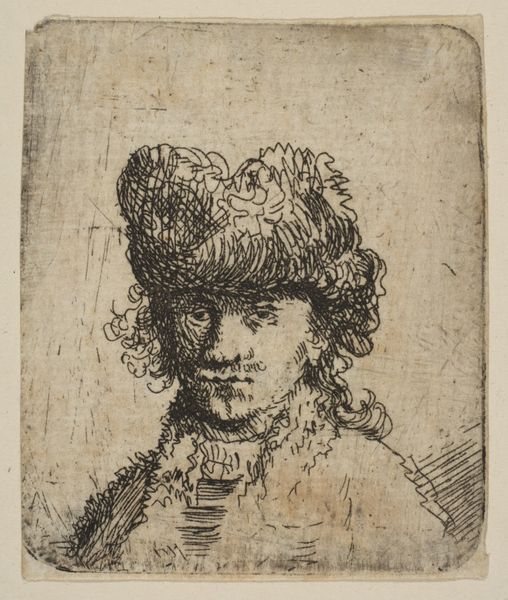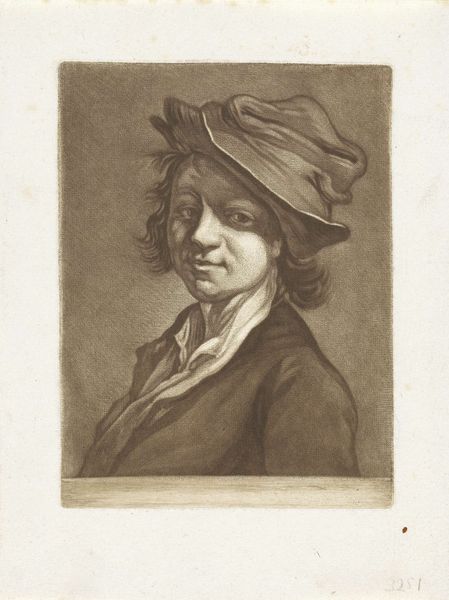
print, etching
#
portrait
#
medieval
# print
#
etching
#
limited contrast and shading
#
portrait drawing
#
genre-painting
#
remaining negative space
Dimensions: 100 mm (height) x 82 mm (width) (plademaal)
Curator: Here we have Johan Bülow’s etching, "Rembrandts selvportræt," created around 1780. It currently resides at the SMK, the National Gallery of Denmark. Editor: My initial impression is one of gentle curiosity. There's a lightness in the etching style, an openness, especially with the soft lines and the areas of untouched space. Curator: Indeed. Note how Bülow employs a deliberate etching technique. Observe the limited contrast and the relatively simple shading. These choices result in a visual structure prioritizing subtle tonal shifts and carefully modulated surfaces. Editor: For me, the immediate connection is with Rembrandt himself. Bülow isn’t just making a portrait; he's referencing the whole idea of the artist, the image that Rembrandt crafted so meticulously. The cap, the fur, it's a costume of artistry. Curator: Interesting. To extend your thought: it can be useful to consider the "genre painting" theme assigned to the piece. Beyond an ostensible reproduction of Rembrandt's image, Bülow could subtly indicate aspects of the art market, the image of the artist, the idea of authorship… Editor: Exactly! And the remaining negative space is very telling. He is surrounded by this undefined ethereal plane. He could be floating or stuck… maybe both? The composition suggests the psychological space that surrounds creativity. Curator: One might read this slightly differently and consider the materiality: etching, as a medium, presents unique technical and visual constraints that would have dictated choices and perhaps even altered meanings available for expression within the work. Editor: Maybe it’s just me wanting to put a contemporary reading onto it. It also reminds me a bit about some philosophical assumptions about art… "what is art, really"? It almost reminds me of some concept about structuralism. Curator: These interpretive frames complement each other more than oppose! Thank you for helping expand the understanding. Editor: My pleasure! Seeing old themes retold and reconsidered always is the best reward for a hard look!
Comments
No comments
Be the first to comment and join the conversation on the ultimate creative platform.

